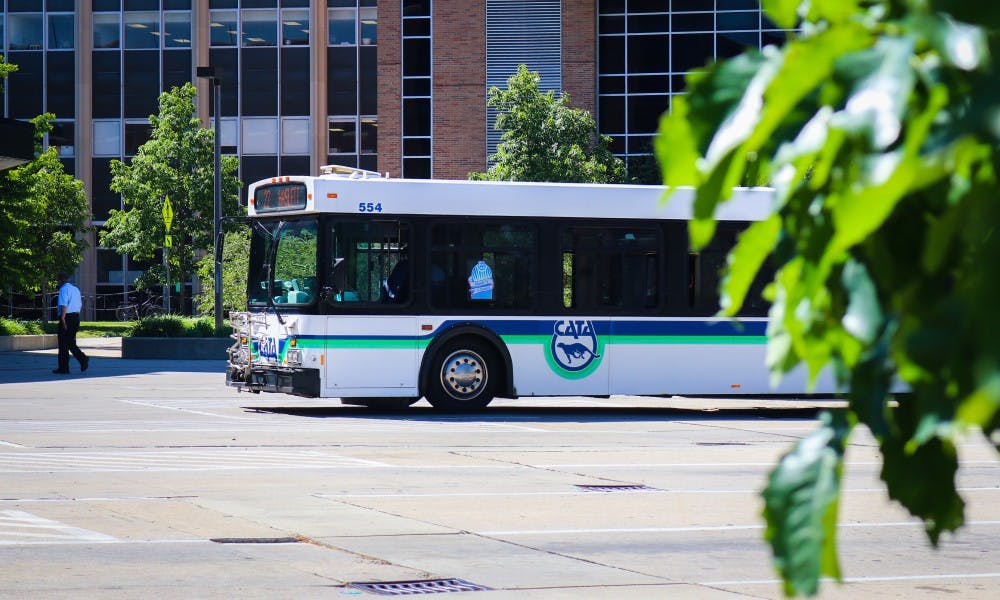Let's think about welcome week at MSU.
It’s the first day of classes, but no one knows where their classes are or how long it will take to get to them. Campus seems like some uncharted land that man has yet to conquer. No one wants to be that kid who asks for directions or pulls out their phone to use the Google Maps app on their smartphone.
This list has been devised to break down the positives and negatives of six methods of navigating MSU's 5,200 acre campus.
Walking
Pros
Walking can be the cheapest way to get around campus, especially for those students trying to make it by on a college budget. For students whose dorms are central to campus or are at least relatively close to their classes, that makes this option even more appealing.
It depends on the amount of walking you do and what kind of shoes you wear. Walking constantly can wear out shoes faster than one would think.
If done right, walking can be a cheap and reliable option, but it’s also a source of good exercise. For students who find themselves hitting the books harder than they used to and working out less, walking can be the key to staying in shape. It’s important to try and keep that infamous "Freshman 15" at bay.
Cons
One of the biggest downsides to walking is the amount of time it takes to get to a destination on campus, especially if one's classes are spread out. Having a handful of shoes to rotate through wearing is important for those who find themselves walking frequently. Walking during times of extreme weather such as heat, rain or snow can make an arduous journey across campus even more strenuous.
Longboarding
Pros
Longboarding is another relatively cheap option in the long run. A decent longboard that offers versatility and reliability will cost around $100 or more. For those who want a slightly faster option than walking, try out a longboard.
Longboards could be considered more portable than bicycles. Rather than taking the time to stop at a bike rack, students can just pick their longboard up and carry it to class to conveniently store it under their seat or place it against a wall.
Cons
Despite the upsides of investing in a longboard, it is a mode of transportation that is heavily dependant on what season it is.
Once winter hits, count on packing that shred sled away. Longboards are heavily dependent on the conditions of the weather, with the ultimate downside to them being cracked pavement and snow.
CATA bus system
Pros
The Capital Area Transportation Authority, or CATA, offers few different travel options that vary in price. CATA allows students to purchase a variety of different passes that best suit their transportation needs.
Support student media!
Please consider donating to The State News and help fund the future of journalism.
Students can buy a 31-day pass for $18 or a full semester pass for $50. Both include unlimited rides on campus. They can be purchased at the MSU ID Office or at select Sparty’s convenience stores across campus, like the one in the MSU Union.
Through CATA's Spartan Service routes, buses drop students off in various convenient locations on campus. On very hot or cold days where walking to class on the other side of campus just isn’t an option, CATA proves useful.
Cons
Many CATA bus routes are scheduled to make stops at designated locations every seven minutes, but that varies with the amount of traffic, pedestrians and drivers waiting for people to catch up to the bus before it leaves.
It may take some time to learn the bus routes by heart, despite all the maps and resources that are offered by MSU and CATA. Even knowing the routes by heart and waiting for the bus at the correct time won’t prevent the buses from becoming crowded when winter arrives.
As a result of an increased number of riders, that bus you need to catch to get to class on time could occasionally drive right past you because it can’t hold any more students.
Cars
Pros
With seven lots for on campus residents, six for visitors to campus, three booth lots and an estimated 600-meter parking space, cars are promising method of transportation. Parking permits are a costly option, as they range anywhere from $108 to $320 depending on the lot, but the flexibility they offer makes the cost worth it.
Using a car to get around campus allows students to leave when they want and is fairly cost-effective when one only has to travel a handful of miles. Cars offer air conditioning during the summer and heat during the winter. They also ensure that students won’t be shoulder-to-shoulder with people on the bus or freezing on the street corner as they wait to cross the street. Students can also reduce the overall cost of gasoline by carpooling with friends.
Cons
Parking on campus is not always convenient. Finding a perfect parking spot isn’t always an option. This can force students to park further away or higher up in a parking structure than they’d like. Parking tickets are also a huge downside if students fail to make it back to meters in time.
Once winter comes along, driving becomes even more difficult. Students who aren’t in covered parking areas may have to clean off snow or even shovel their cars out of the snow.
Mopeds
Pros
Mopeds are an efficient and cost-effective ways of getting around campus. Not only are they a fast mode of transportation, but they are relatively cheap and have convenient parking.
The initial cost of a moped is relatively high, but compare that to buying a car. Mopeds can usually retain their value depending on what make and model it is and how well it's taken care of. They are also fuel efficient.
Cons
Mopeds can be a wise investment, but not everyone can find the means to purchase one. A big problem with mopeds is that they leave riders open to the elements, making driving in the winter a difficult task.
Until recently, mopeds were able to park near bike racks. Starting Aug. 1, 2018, students will now be charged $50 for a moped parking permit. Students will be required to park in designated moped parking spots. Until those spots are created, it’s hard to tell how that affects their convenience.
Bikes
Pros
Bikes are by far one of the most obvious ways students can get around campus. There are around 20,000 bikes currently registered to MSU faculty and students.
Due to the minimal cost and maintenance of bikes, bike racks are conveniently located near every building around campus. They have also become a primary mode of transportation in East Lansing and the surrounding areas.
Cons
Storage during the winter can be hard to come by for bikes. A lot of dormitories offer rooms to store them, but not all. Getting a bike out can be a hassle. Those who choose not to store their bikes during the winter can see the results of serious rusting or damage to wheels and bike frames. It's possible that owners wouldn't be able to use their bikes right away during the following spring season.
Students also face bike theft, especially if their bike locks can be easily cut off or broken, yet the lack of winter storage and possible theft is offset because of the low cost of bikes, reduced travel time and cheap maintenance.
Discussion
Share and discuss “Top six ways to travel around MSU's campus” on social media.







